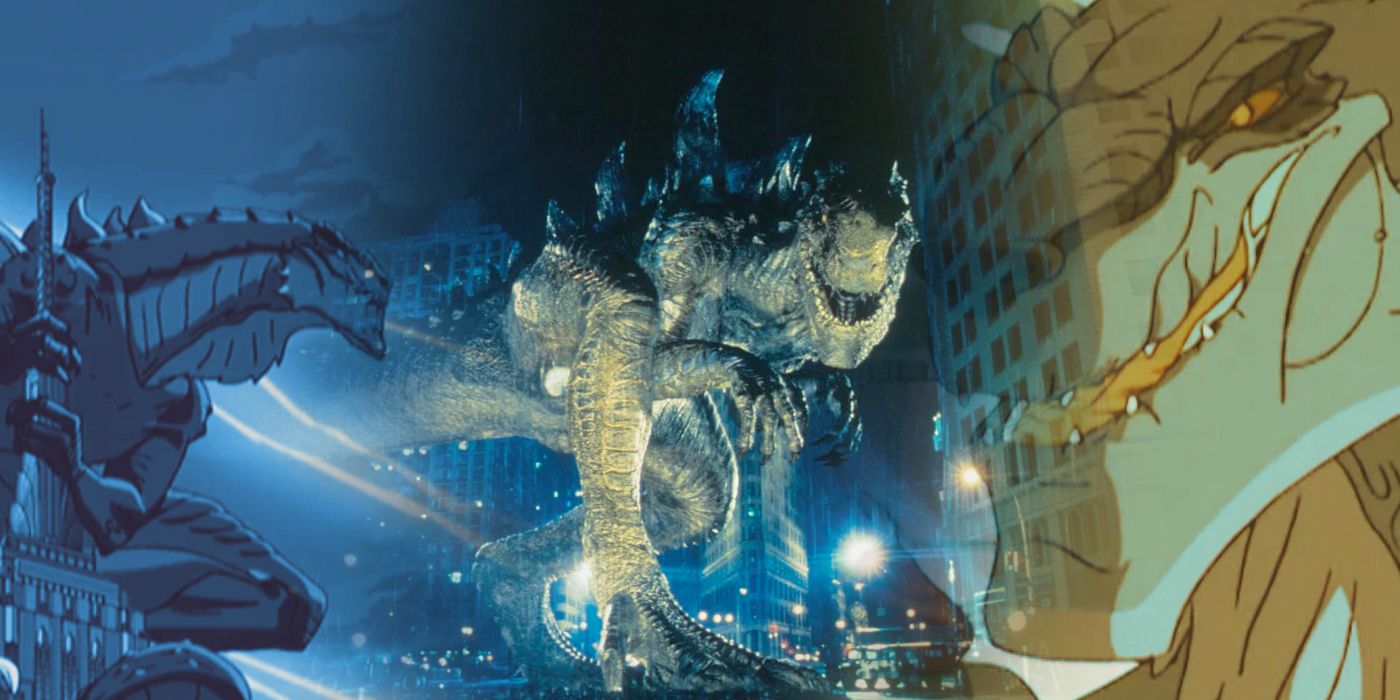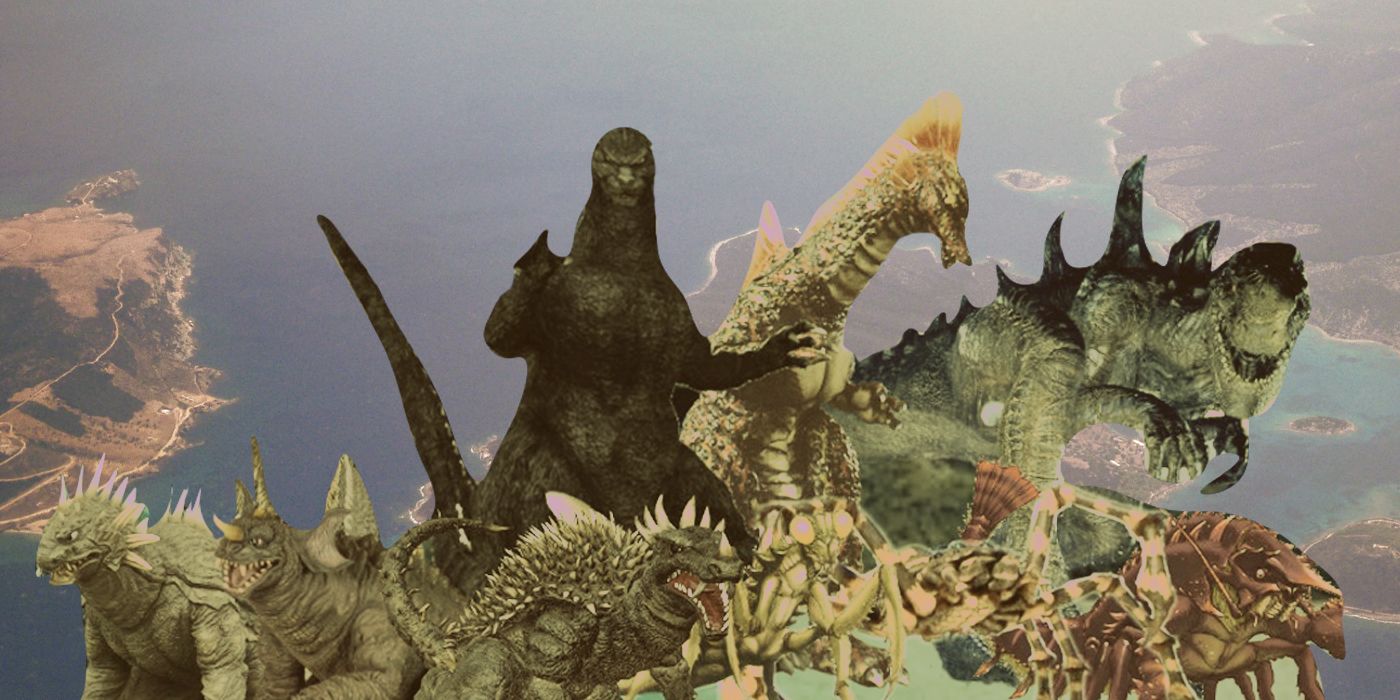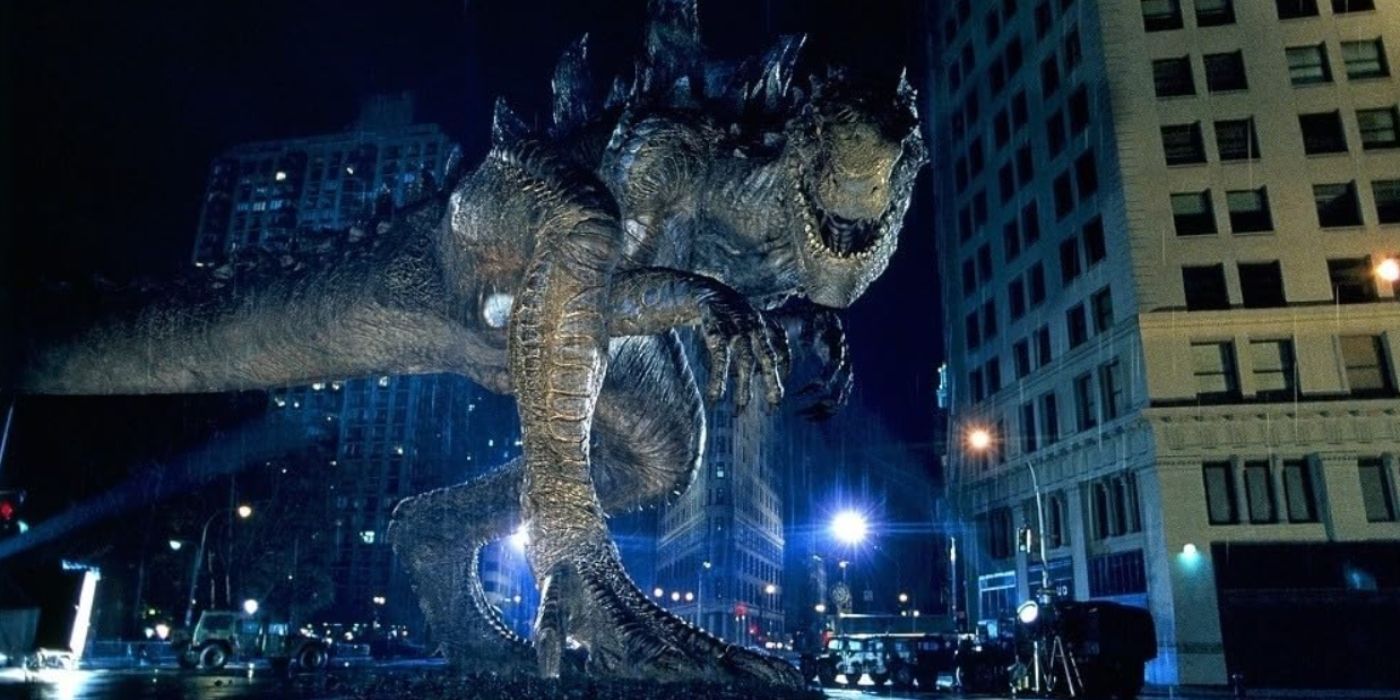Summary
- Japanese film studio Toho allowed Western filmmakers full control over a Godzilla film, eventually resulting in an embarrassing backlash that would force them to reassess their IP.
- Director Roland Emmerich transformed Godzilla into a more traditional, bland monster that was clearly taking its cues from recent hits like
Jurassic Park
, rather than the Godzilla canon. - The film’s financial success was ultimately deceptive, making millions despite the director’s “soulless” disregard for the source material.
The 1998 TriStar version of Godzilla has been living down a quarter of a century of bad press. Think of it as Godzilla 2.0, the inevitable result when a beloved, decades-old B-movie staple finally goes Hollywood, for better or worse. That’s certainly how the Godzilla IP owners justified it.
With the death of long-time producer Tomoyuki Tanaka, the late ’90s marked the end of the “Second cycle” of Godzilla cinema. Eyeing the Western market as prime for a box-office assault by their radioactive abomination, the Japanese studio owners of the Godzilla copyright, Toho, made the unprecedented move to let Western filmmakers have complete control over the fate of their crown jewel. If you know this film today, it’s not for the right reasons. This May blockbuster left everyone with a sour taste in their mouths and would come as a shock to the system of Godzilla fans, and we don’t mean the massive chin they added to the lizard.
Diehards of the kaiju genre were confused and irritated by this hollow reboot, and Toho regretted the decision ever since. Their response to Emmerich’s film is both resourceful and deeply scornful, resulting in not outright erasure but re-canonization.
The First Western Godzilla
Godzilla (1998)
- Release Date
- May 20, 1998
- Runtime
- 139 Minutes
At the time of the late ’90s, Godzilla‘s monster movie franchise had been chugging along, albeit with minimal interest outside of Asia. There was cash to be extracted internationally, and so a daring scheme was drawn up to conceptualize a new, Western-oriented Godzilla film series that would run parallel alongside the successful Japanese one produced by Shōgo Tomiyama. Toho’s notes were specific, laid out in a novel-length “bible” as film historian Steve Ryfle describes it.
The sticking points primarily concerned basic cosmetic and core behavioral traits, e.g. Godzilla must maintain his signature dorsal plates and be barred from snacking on tasty humans. Also, Godzilla wasn’t supposed to die in the film. Emmerich flexed his muscles, challenging the desperate Toho with this ultimatum:
“I also told them, ‘Guys, we either do it like this, or we don’t do it at all. It’s your trademark, but if you don’t do it this way … you’ll have to find someone else.'”
They relented. Emmerich didn’t want to make just another Godzilla. Rather than the cruel embodiment of man’s hubris in the form of a monstrous destructive force of nature, Emmerich turned it into a maternal entity, acting out of its best, Darwinian intentions. It hearkens back to the classic 1954 film, the anti-nuclear theme unmistakable, yet clings to the message at the cost of Godzilla.
Godzilla (1998) Is Closer to The Beast From 20,000 Fathoms
Yup, Godzilla has a definable character, at least according to fans. Producer and writer Dean Devlin defended this unpopular choice, with TriStar wanting to create something unhindered by past films. Emmerich himself hinted that the earlier installments were too low-brow and shlocky in interviews, clearly not caring for the source material.
Emmerich was, for all intents and purposes, remaking Eugène Lourié’s The Beast From 20,000 Fathoms, not Americanizing the 1954 Japanese film Godzilla, down to the plot element about the dinosaur returning to her old home in NYC out of natural spawning instincts. Toho’s Godzilla didn’t eat people by rule, but as Ray Harryhausen’s stop-motion abomination featured in The Beast From 20,000 Fathoms, Emmerich’s monster tried to swallow the main cast.
The original Godzilla has a downbeat ending as a main character sacrifices himself, while TriStar’s reboot ends with a soaring, triumphant score blaring, our hero surviving. The Japanese version features a blackly ironic twist, a superweapon, even more horrible than the atomic bomb used to kill the monster and save Japan, called an oxygen destroyer

The Worst Godzilla Movie Led to One of the Most Underrated Shows of All Time
Godzilla 1998 is one of the only kaiju films in the franchise that is universally despised, but it did lead to an underrated TV show.
For a brief moment in the film, Japanese filmmakers sympathize with J. Robert Oppenheimer, daring to present his mindset and justification to the Japanese public. In both Emmerich and Lourié’s, the monster is dispatched matter-of-factly by the military using big guns when trapped … boom, high-fives, the end. No deep contemplation of the ethics of science in the American monster films.
As frequently pondered by critics and viewers, there are no atomic testing areas on the Atlantic seaboard, nowhere near the setting for this film. The Big Apple was only chosen for the spectacle and scale, which puts the film’s priorities in perspective. Originally borrowing and Japanizing the radiation plot from the 1953 Warner Brothers film The Beast from 20,000 Fathoms, Godzilla would coast on blatant copyright infringement for many years. Emmerich simply stole the idea back.
Was Godzilla (1998) a Success?
The film recouped its massive budget. It wasn’t on the scale of Jurassic Park, but a respectable showing nonetheless. Making 350 million was the easy part. But even with some slick marketing and popular actors like Matthew Broderick and Jean Reno, it didn’t go down as a classic. Worse, Toho and the hardcore fans immediately despised it.
Godzilla (1998) Was Rejected by Fans
The absence of a true Godzilla was seen as a betrayal to Godzilla fans, especially those in Japan. As author Brian Thomas observed, “Devlin and Emmerich made a Godzilla movie without Godzilla,” placing much of the blame on the screenwriters who didn’t care much (or know anything) of the lore.
In an interesting move to salvage and recontextualize the loathed film, the Japanese IP owners did not discard it in the trash like Western producers might, or remove it from the official canon, but only nudged it into its own little corner of the larger Godzilla universe. Renamed “Zilla,” to separate it from the real Godzilla.
Toho top brass were horrified at the glitzy Emmerich treatment. The monster was less an enigmatic Lovecraftian beast in the guise of a pro-wrestler than a big, dumb, hormonal dinosaur. They quarantined the film in order to not denigrate the overall franchise or alienate the existing fanbase. Godzilla fans were so incensed that they dubbed the lumbering, over-grown iguana as “fraudzilla,” and you thought Star Wars fans were fickle. The moniker could be applied to Emmerich in many a fan’s mind, the director infamously writing off the film:
“They [Godzilla movies] were just weekend matinées you saw as a kid, like Hercules films and the really bad Italian westerns.”
You don’t need to be an expert on Japanese society to see why this did not connect with anyone on a deep level. As best expressed by critic Roger Ebert in his ruthless autopsy, the film fundamentally doesn’t understand what made the Japanese films work, a “careless pastiche of its betters” while our central hero is a “placeholder waiting for a re-write.” All stemming from the director’s unwillingness to give in to the silliness and reveling in the camp or horror, skirting the premise of a giant lizard run amok out of shame, replacing the idiosyncratic melodrama with lots of boring clichés.

This Official ’90s Godzilla Series Was Almost Entirely Made With Action Figures
Showing off an impressive collection of Bandai-made action figures, Godzilla Island showcased a large array of Kaijus and action-packed stories.
Godzilla (1998) Proves the Importance of Source Material
Most of the brainpower on this resided in the Sony marketing department. It’s still unclear how much of the films from Toho’s back catalog the director or his writers had absorbed. But from Emmerich’s statements, he would join the lengthy ranks of directors who had zero interest in an adaptation, miscalculated their own customer base’s sensibilities, and disrespected the stories they were entrusted with.
Acquiescing to TriStar and Emmerich, Toho swallowed their pride, correctly estimating a large opening, without anticipating long-term damage. In a silver lining, the 1998 fan reaction was so strong that it pushed Toho to focus more on quality. “Zilla” was not completely tossed in the dustbin of cinematic history, managing to get a sequel in 2001. Thus began the well-regarded “Third cycle” of the series, with Tomiyama carrying on despite the affront from Emmerich’s loathed black sheep. Toho was correct, Godzilla truly cannot be killed. Stream Godzilla (1998) on Max.





